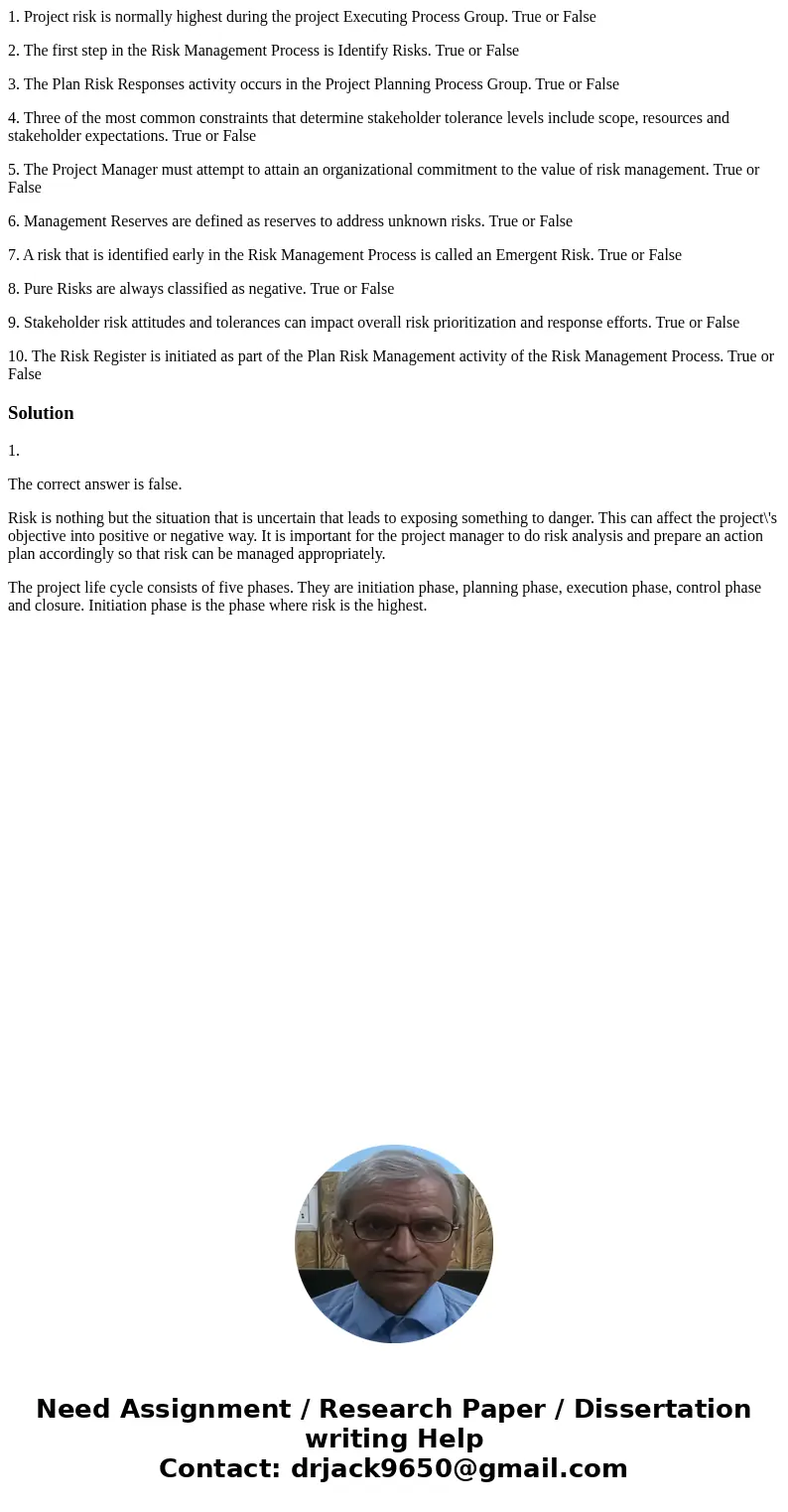1 Project risk is normally highest during the project Execut
1. Project risk is normally highest during the project Executing Process Group. True or False
2. The first step in the Risk Management Process is Identify Risks. True or False
3. The Plan Risk Responses activity occurs in the Project Planning Process Group. True or False
4. Three of the most common constraints that determine stakeholder tolerance levels include scope, resources and stakeholder expectations. True or False
5. The Project Manager must attempt to attain an organizational commitment to the value of risk management. True or False
6. Management Reserves are defined as reserves to address unknown risks. True or False
7. A risk that is identified early in the Risk Management Process is called an Emergent Risk. True or False
8. Pure Risks are always classified as negative. True or False
9. Stakeholder risk attitudes and tolerances can impact overall risk prioritization and response efforts. True or False
10. The Risk Register is initiated as part of the Plan Risk Management activity of the Risk Management Process. True or False
Solution
1.
The correct answer is false.
Risk is nothing but the situation that is uncertain that leads to exposing something to danger. This can affect the project\'s objective into positive or negative way. It is important for the project manager to do risk analysis and prepare an action plan accordingly so that risk can be managed appropriately.
The project life cycle consists of five phases. They are initiation phase, planning phase, execution phase, control phase and closure. Initiation phase is the phase where risk is the highest.

 Homework Sourse
Homework Sourse